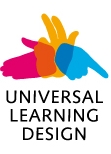This presentation will report on a project that produced a set of learner-centred teaching guidelines using Universal Instructional Design (UID) and accessibility standards for application to post secondary course websites. The principles of UID are found in the Universal Design (UD) perspective that views people as individuals with varying abilities and preferences. Based on the perspective of Universal Design, Universal Design in Higher Education (UDHE) identifies physical spaces, information technologies, services, and instruction which allow instructors to adopt inclusive choices.In this presentation, we are concerned with the instructional aspect of UDHE, Universal Instruction Design, and how the principles of UID are applied to web-based course sites. Instructors who employ UID principles consider the potential needs of all learners, identifying and removing unnecessary barriers to teaching and learning, while preserving academic rigor (Coomber, 2007).Teaching strategies based on the principles of Universal Instructional Design help to fill a gap in teaching by providing insight into developing specific teaching strategies to provide effective instruction for a diverse audience of students.
The presenters partnered with a group of faculty through a university-wide learning community seeking to improve instructional strategies for course websites. The literature review, about accessible course web sites, was produced in consultation with the Centre for Teaching and Learning, Student Disability Services, University of Windsor Accessibility Committee, and the School of Social Work, University of Windsor, Accessibility Planning Committee. The main issues for exploration, developed from the literature review, include clarity of materials, efficacy of organization, timeliness of posting, and other concerns, such as, legible font and size, color contrasts, audio to assist navigation through the web site, links to other websites and self-help tools. Data acquired from students in eight undergraduate courses in social work and disability studies by developing and adding twelve additional questions to the course student evaluations will be discussed. The results will assist instructors to examine and adjust their course websites to reflect the principlesof UID and compliance wih consumer accessibility standards.
By targeting varying learning needs, this project will help faculty to adopt instructional practices for course websites that strengthen a learning-centred approach. As a result, faculty will focus on learning obstacles that face students with varying needs rather than viewing student needs through their impairments.This approach will maximize inclusion for students with disabilities and address the diverse learning needs of all students.
This presentation seeks, through audience participation, effective teaching strategies and applications for the instructor’s course website. The following objectives will enable the participant:
To review current literature about learning centred approaches and the principles of Universal Instructional Design (UID).
To engage in an interactive group exercise that involves selecting applications for a course in disability studies, reflecting good teaching strategies and principles of UID.
To consider how application choices for course websites comply with and foster accessibility.
To reflect on the applicability of a set of guidelines for course websites and to what degree they are consistent with good teaching strategies and principles of UID.









